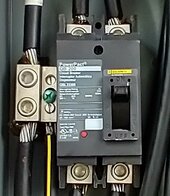Looking at ways to pass the 120% rule. Need to get to 40 amps or less and the Growatt 9k-18kPV does that with 38amps AC out. Larger two are 42 and 48 amps.
Is an 18kPV inverter enough for 15-17kPV of panel's any over production? Will it just clip with planned east west split helping? Worst case is a string of 8 Adani 535's = 4.28kW or 4 strings =17.1kW. Could get by with 28 535s (15kW), but a pallet is 31 panels and 28 panels cost the same as a pallet. Who am to turn down free panels run a minisplit and cool the inverter? Could drop down to more 400+W panels but the higher wattage is tempting.
Tesla online showed 12.4kW PV needed using monthly average billing and local installer similar after reviewing year's kW usage. I came up with 14-15kW to cover possible future EV or PHEV, and warmer summers. Monthly net zero and not worried about excess as long as most of summer AC offset.
A 200a disconnect before the 200a main panel requires a utility decision on which to apply the rule. If disconnect, then I am limited to 40a unless the disconnect changing to blade/knife first is acceptable. If main panel rules, then lower main breaker or tap to a new panel. So the Growatt 9k-18kPV saves money.

Is an 18kPV inverter enough for 15-17kPV of panel's any over production? Will it just clip with planned east west split helping? Worst case is a string of 8 Adani 535's = 4.28kW or 4 strings =17.1kW. Could get by with 28 535s (15kW), but a pallet is 31 panels and 28 panels cost the same as a pallet. Who am to turn down free panels run a minisplit and cool the inverter? Could drop down to more 400+W panels but the higher wattage is tempting.
Tesla online showed 12.4kW PV needed using monthly average billing and local installer similar after reviewing year's kW usage. I came up with 14-15kW to cover possible future EV or PHEV, and warmer summers. Monthly net zero and not worried about excess as long as most of summer AC offset.
A 200a disconnect before the 200a main panel requires a utility decision on which to apply the rule. If disconnect, then I am limited to 40a unless the disconnect changing to blade/knife first is acceptable. If main panel rules, then lower main breaker or tap to a new panel. So the Growatt 9k-18kPV saves money.




